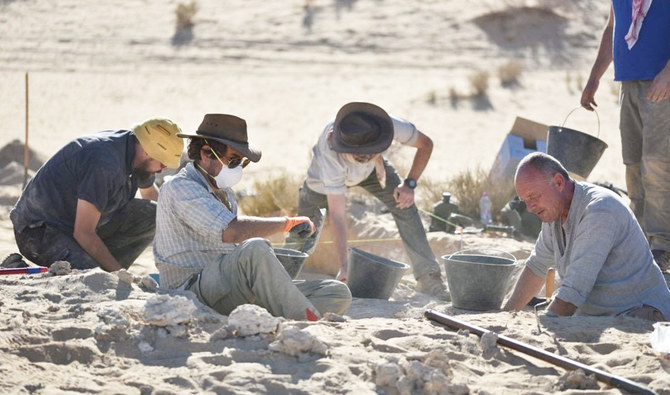
- ARAB NEWS
- 16 Apr 2024

RIYADH: The national heritage sector at the Saudi Commission for Tourism and National Heritage (SCTH) is preparing to launch the ninth season of the “Green Arabian Peninsula” scientific project, in partnership with the King Saud University, the Saudi Geological Survey, the Max Planck Society, Oxford University and the University of Queensland.
Rustom bin Maqbool Al-Kubaisi, deputy chairman of the national heritage sector at SCTH, said that the commission values the project due to its important discoveries.
“The most valuable of these discoveries was a group of 85,000-year-old human footprints found in the Nefud Desert. This astonishing finding shows the spread of man outside Africa and his arrival to the Arabian Peninsula. A single human finger bone was also unearthed at an ancient lake site called Al-Wusta in Taima province, proving that the region was a lush grasslands dotted by hundreds of freshwater lakes.”
He added that the project involves several personnel from the antiquities sector, the Saudi Geological Survey, archeologists from King Saud University and some Saudi university students.
The director general of the archaeological research and studies center at the SCTH, Dr. Abdullah Al Zahrani, said: “Human migration from Africa is a main subject in the study of human development, where the lands of the Kingdom have an important role due to its geographical location between the continents.”
He added: “Due to the importance of the Red Sea region as the corner where mankind inhibited at the beginning of the Ice Age, the results of the latest research show that wild environments had a decisive significance in the spread of mankind and their attempts to expand during the improved periods of the Ice Age, where the area was rich in its biodiversity and full of rivers, lakes, meadows and plains.”
Over the past two years, several studies have been conducted via the stable isotopeon fossils connected with stone tools, marks of bone cutting and recently-discovered butchery tools. The results have revealed the presence of similar circumstances to the current Savanna in east Africa, which hints to the spread of mankind in the region and their quick adaptation in the area.
The results also showed that the Arabian desert’s difficult circumstances affected fossil formation and changed their appearances.
The study concluded in previous seasons that the oldest migrations from Africa were not heading only towards the Levant, but also to the inside of the Arabian Peninsula, where these studies give deep insights about the interaction of mankind, animals and the environment.
SPA